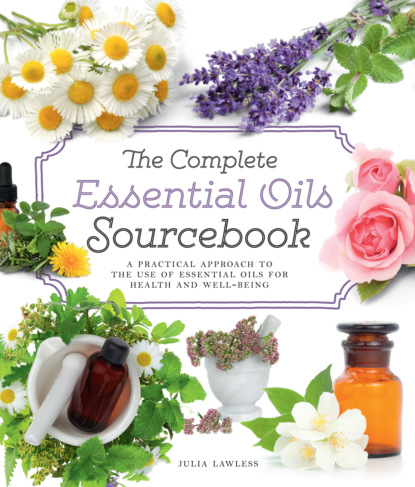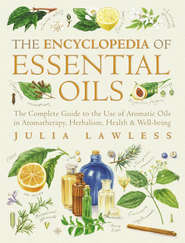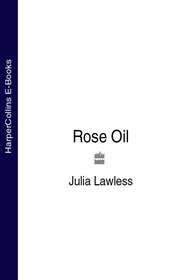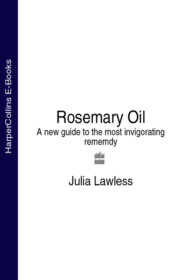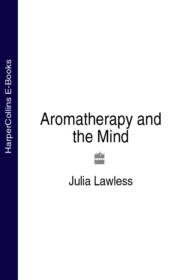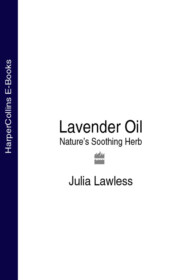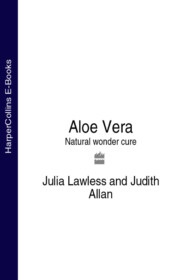По всем вопросам обращайтесь на: info@litportal.ru
(©) 2003-2024.
✖
The Complete Essential Oils Sourcebook: A Practical Approach to the Use of Essential Oils for Health and Well-Being
Настройки чтения
Размер шрифта
Высота строк
Поля
Massage not only improves circulation and relaxes muscles, but also has psychological benefits, making the recipient feel comforted and cared for, and produces a unique sense of well-being.
However, when the general benefits of massage are combined with the effect of specific essential oils being rubbed into the skin, the healing dynamics already at work can take on a completely new dimension.
The actual techniques of aromatherapy massage are adapted mainly from the Swedish massage style, combined with a more individualistic approach to body work, adopted from the intuitive massage style initiated in the early 1960s. The theory behind the preparation of the essential oils themselves is based largely on the ideas of the French dermatologist, Marguerite Maury. Her concept of the individual prescription is still utilized by most professional aromatherapists working today, and they always prepare an individually chosen blend of essential oils for each client and for each massage session, depending on the needs of the client on each separate occasion.
JASMINE
“The way to health is to have an aromatic bath and scented massage every day.”
HIPPOCRATES
There are three distinct but overlapping aspects of an aromatherapy massage treatment and this form of therapy can therefore be seen as being beneficial in three quite distinct but interrelated ways:
the massage itself and its effects on the body
the interraction between therapist and recipient
the effect of the essential oils.
Each aspect supports the others in such a way as to provide a multidimensional therapeutic action. During a treatment, the essential oils themselves also interact with the body in two ways:
through inhalation (primarily psychological effects)
through absorption into the bloodstream via the skin (primarily physiological effects).
Touch and smell: a healing synergy (#ulink_5d7a8f7c-75e3-56b7-824c-f227825a9e17)
THE SYNERGY OF essential oils and massage has been shown to be a very effective combination in the treatment of stress-related disorders, due to the powerful interaction of touch and smell. During the course of a massage, a certain amount of the essential oils will be absorbed through the skin and into the bloodstream to affect the nervous system, as well as other parts of the body directly, by toning, sedating, or stimulating. When this is backed up by a comforting and supportive relationship between patient and therapist, it can provide a vital key to breaking the stress cycle of anxiety, insomnia, and nervous fatigue which underlies so many common physical complaints.
There is increasing evidence to show that stress affects not just the mind, but also the nervous, immune, and endocrine systems, and that it constitutes a factor in physical, as well as mental health.
It is not surprising that stress-related problems are an area in which aromatherapy massage enjoys a great deal of success, because it simultaneously operates on both a physical and psychological level. An aromatic massage, for example, is especially valuable for those who suffer from a number of different responses to stress at the same time. Stress-related illness often presents a wide range of contradictory symptoms. Aromatherapy, rather than dealing separately with individual symptoms such as high blood pressure, indigestion, and back pain, deals with the stress itself. In the words of Dr. Ann Coxon:
“Obviously, the approach of holistic treatment is to help enable people to manage their primary life situation, and the ability of aromatherapy to get at the knot, at the stress reaction itself within the body without using yet more pharmacological treatment is terribly important.”
Evidence of the widespread sense of “disease” experienced today in the West is shown in the high consumption of tranquilizers and stimulants, although it is well known that addiction, toxicosis and other side effects can be caused by these products if taken regularly. Any treatment that can help to revitalize and de-stress the organism, without producing detrimental side effects, is therefore of great value. Essential oils, used in the appropriate doses, are safe and harmless, and it is widely agreed that, while they can be highly effective, they “do not cause troubles like those produced by the ordinary psychological drugs.”
Essential oils to relieve stress
There are many essential oils that are particularly suited to the treatment of stress-related conditions, both on a physical and psychological level. Lavender is possibly the most useful oil employed in this context, because of its regulating effect on the nervous functions, and due to its versatile nature. Other oils which are especially valuable for stress-relief include chamomile, rose, jasmine, neroli, bergamot, geranium, frankincense, and ylang ylang.
JASMINE
CHAMOMILE
LAVENDER
Massage techniques (#ulink_85202e21-0cd0-5661-bbd5-cae6c6da49d6)
The following massage techniques should be carried out with a steady, repetitive rhythm. Throughout the massage, try to link the different techniques together into a seamless sequence. If possible, keep at least one hand in contact with the person being massaged at all times, even when moving from one part of the body to another. Before working on the deeper muscles, it is important to warm and relax the superficial ones. While working on a specific part of the body, therefore, the techniques progress from gentle stroking movements to more active rubbing or kneading movements, and eventually to vigorous percussion-type strokes. In general, the more slowly a stroke is performed, the more relaxing it will be. Conversely, the more briskly and rapidly a movement is performed, the more stimulating its effects will be.
Sources of base oils used in massage
Essential oils used in massage are nearly always diluted in a base or carrier oil. Use good-quality, preferably cold-pressed oils, as they are absorbed more effectively into the skin. Some good carrier oils for general use include sweet almond, sunflower, grapeseed, and coconut oil (see here (#litres_trial_promo) for further details on base oils).
COCONUT
SWEET ALMONDS
SUNFLOWER SEEDS
GRAPES
WARNING
Although aromatherapy massage is effective for both the prevention and treatment of stress-related disorders, it is also very important for the individual to be helped to assess factors such as lifestyle, work patterns, and emotional relationships, and to try to make necessary changes to combat the causes behind the stress reaction directly.
Effleurage: stroking movements (#ulink_2a0c5eb7-9a38-5df2-8de6-a96d0512f414)
THIS IS THE BASIC STROKING MOVEMENT, and the first technique to be used on any part of the body. Using slow and gentle strokes to cover the surface of the skin ensures that the aromatic oils will be readily absorbed. Effleurage promotes relaxation and draws blood to the area, improving both the assimilation of nutrients and the flow of lymphatic fluids, and aiding the elimination of toxins. It is a soothing and comforting type of movement that can also be used to link other techniques throughout the course of the massage.
Stroking
Using the whole flat area of both palms (not just the fingertips), gently lay your hands side by side on the skin.
1 Slide your hands together rhythmically along the skin, to cover a large or small area.
2At the end of each stroke always return to your starting position by skimming lightly over the surface.
3This movement is best employed on the back.
Gliding
This is a variation of the basic stroking movement, performed with the hands gliding together, side by side and pointing in opposite directions, as shown in steps 1 and 2. The hands may also be placed one on top of the other when extra pressure is needed. As with stroking movements, at the end of each stroke you should always return to your starting position by skimming lightly back over the surface of the skin (as shown in step 3). This movement is a particularly useful stroke for massaging the recipient’s arms and legs.
STEP 1
STEP 2
STEP 3
Pulling
Like stroking, this is a firm, but gentle, rhythmic movement, but here the emphasis is on pulling rather than pushing. Using alternate hands, methodically work your way along a specific area and back again, with a slight lifting and pulling stroke. This is especially useful for the sides of the torso or the limbs.
STEP 1
STEP 2
Другие электронные книги автора Julia Lawless
Rose Oil




 0
0





